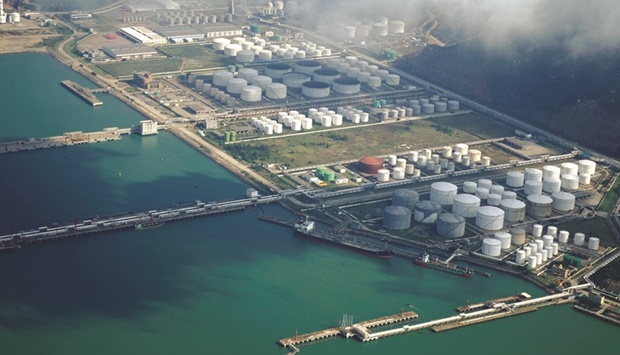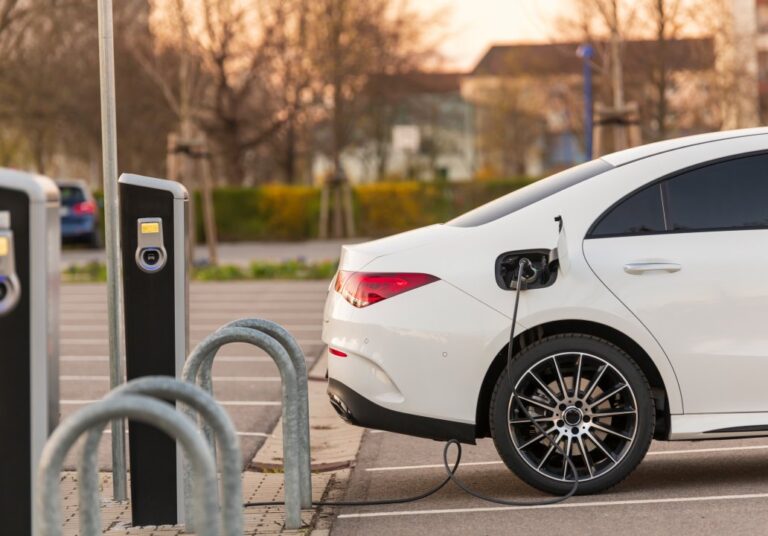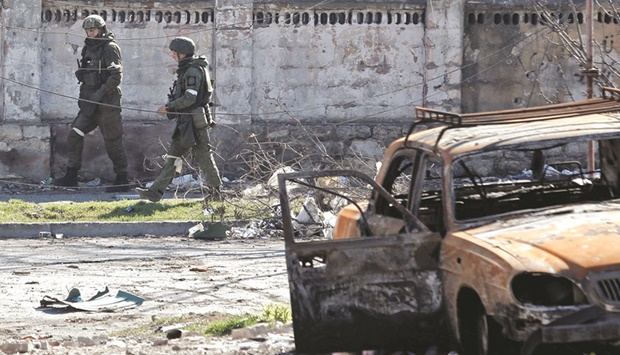Germany faces $240bn hit if Russian energy cut off
Bloomberg / Berlin
Germany was warned it could face a €220bn ($240bn) hit to output over the next two years in the event of an immediate interruption in Russian energy supplies over the war in Ukraine.
Economic institutes advising the government in Berlin said on Wednesday in a joint forecast that a full halt in Russian natural gas imports would result in a “sharp recession.”
“The decision to become independent from Russian supplies of raw materials is likely to remain valid even when the military and political situation calms down again,” the report said. “That means part of the energy supply and energy-intensive industry must realign itself.”
While the €220bn estimate is the equivalent of 6.5% of annual output, it’s nowhere near the almost €890bn in borrowing Germany carried out in 2020 and 2021 to shield the economy from the fallout of the pandemic.
Amid mounting casualties and reports of brutal atrocities, Germany has been under increasing pressure to justify its resistance to an embargo on Russian gas – widely seen as the ultimate leverage against President Vladimir Putin.
Ukraine snubbed a request by Frank-Walter Steinmeier, Germany’s president, to visit Kyiv this week following criticism for his past support for the Nord Stream 2 gas pipeline from Russia to Germany and for his role when foreign minister in encouraging reconciliation and dialogue with the Kremlin.
Finance Minister Christian Lindner highlighted the huge challenges facing Germany as it tries to wean itself off Russian energy as quickly as possible while also pursuing a goal of climate neutrality by 2045.
“Our world will not be the same again as it once was,” Lindner, who’s chairman of the pro-business Free Democrats, wrote in a guest article for the Handelsblatt newspaper published on Wednesday.
“We need new business models, new ideas, new supply chains and new trade relationships,” he said. “We have to reduce one-sided dependencies, be it when it comes to importing energy from Russia or exporting to China.”
Berlin-based DIW, one of the institutes involved in the estimate, said on Friday that Germany could be in position to survive without Russian gas, which currently accounts for two-fifths of its gas deliveries. The group said a combination of high storage, bolstering other energy supplies and implementing programmes to lower demand could offset Russia as soon as this winter.
That’s not a view that’s generally shared by the business community, with industry leaders including Deutsche Bank AG Chief Executive Officer Christian Sewing warning of dire economic consequences if Russian supplies are severed.
Even absent a cutoff, Wednesday’s report pared the outlook for Germany’s economy, predicting growth this year of 2.7% and 3.1% in 2023. Those numbers compare with previous projections for expansion of 4.8% and 1.9%. Inflation will average 6.1% in 2022 – the most in 40 years.
“The shock waves from the war in Ukraine are weighing on economic activity on both the supply side and the demand side,” said Stefan Kooths, vice president of the Kiel Institute for the World Economy. “Increasing prices of critical energy commodities following the Russian invasion further fuel the upward pressure on prices.”
Germany’s industry-heavy economy faces considerable hurdles after the war sent energy prices higher while disrupting supply chains that had already been suffering from pandemic-related snarls. Inflation reached 7.6% in the first full month of the war – the highest level since records began after reunification in the early 1990s.
Companies are seen as particularly vulnerable because of Germany’s reliance on Russian gas. The ruling coalition last week agreed on an aid package for suffering businesses that includes loans, loan guarantees and capital injections, and is meant to help energy firms in particular.







